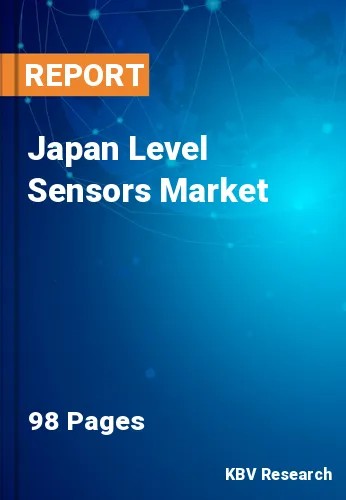Chapter 1. Market Scope & Methodology
1.1 Market Definition
1.2 Objectives
1.3 Market Scope
1.4 Segmentation
1.4.1 Japan Level Sensors Market, by Technology
1.4.2 Japan Level Sensors Market, by Monitoring Type
1.4.3 Japan Level Sensors Market, by End User
1.5 Methodology for the research
Chapter 2. Market Overview
2.1 Introduction
2.1.1 Overview
2.1.1.1 Market Composition and Scenario
2.2 Key Factors Impacting the Market
2.2.1 Market Drivers
2.2.2 Market Restraints
2.2.3 Market Opportunities
2.2.4 Market Challenges
2.2.5 Market Trends
Chapter 3. Competition Analysis – Global
3.1 Market Share Analysis, 2022
3.2 Recent Strategies Deployed in Level Sensors Market
3.3 Porter’s Five Forces Analysis
Chapter 4. Japan Level Sensors Market
4.1 Japan Level Sensors Market by Technology
4.1.1 Japan Level Sensors Market by Contact Type
4.1.2 Japan Level Sensors Market by Non-Contact Type
4.2 Japan Level Sensors Market by Monitoring Type
4.3 Japan Level Sensors Market by End User
Chapter 5. Company Profiles – Global Leaders
5.1 TE Connectivity Ltd.
5.1.1 Company Overview
5.1.2 Financial Analysis
5.1.3 Segmental and Regional Analysis
5.1.4 Research & Development Expense
5.1.5 Recent strategies and developments:
5.1.5.1 Acquisition and Mergers:
5.1.6 SWOT Analysis
5.2 Siemens AG
5.2.1 Company Overview
5.2.2 Financial Analysis
5.2.3 Segmental and Regional Analysis
5.2.4 Research & Development Expense
5.2.5 SWOT Analysis
5.3 Sensirion AG
5.3.1 Company Overview
5.3.2 Financial Analysis
5.3.3 Regional Analysis
5.3.4 Research & Development Expenses
5.3.5 Recent strategies and developments:
5.3.5.1 Partnerships, Collaborations, and Agreements:
5.3.6 SWOT Analysis
5.4 Emerson Electric Co.
5.4.1 Company Overview
5.4.2 Financial Analysis
5.4.3 Segmental and Regional Analysis
5.4.4 Research & Development Expense
5.4.5 Recent strategies and developments:
5.4.5.1 Product Launches and Product Expansions:
5.4.5.2 Acquisition and Mergers:
5.4.6 SWOT Analysis
5.5 ABB Ltd.
5.5.1 Company Overview
5.5.2 Financial Analysis
5.5.3 Segmental and Regional Analysis
5.5.4 Research & Development Expense
5.5.5 SWOT Analysis
5.6 Ametek, Inc.
5.6.1 Company Overview
5.6.2 Financial Analysis
5.6.3 Segmental and Regional Analysis
5.6.4 Research & Development Expenses
5.6.5 Recent strategies and developments:
5.6.5.1 Partnerships, Collaborations, and Agreements:
5.6.5.2 Product Launches and Product Expansions:
5.6.5.3 Acquisition and Mergers:
5.6.6 SWOT Analysis
5.7 Honeywell International, Inc.
5.7.1 Company Overview
5.7.2 Financial Analysis
5.7.3 Segmental and Regional Analysis
5.7.4 Research & Development Expenses
5.7.5 SWOT Analysis
5.8 Fortive Corporation (Fluke Corporation)
5.8.1 Company Overview
5.8.2 Financial Analysis
5.8.3 Segmental and Regional Analysis
5.8.4 Research & Development Expense
5.8.5 Recent strategies and developments:
5.8.5.1 Acquisition and Mergers:
5.8.6 SWOT Analysis
5.9 Texas Instruments, Inc.
5.9.1 Company Overview
5.9.2 Financial Analysis
5.9.3 Segmental and Regional Analysis
5.9.4 Research & Development Expense
5.9.5 SWOT Analysis
5.10. Amphenol Corporation
5.10.1 Company Overview
5.10.2 Financial Analysis
5.10.3 Segmental and Regional Analysis
5.10.4 Research & Development Expenses
5.10.5 SWOT Analysis

